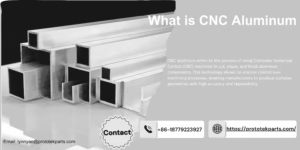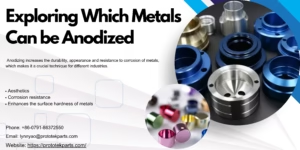博客详情

The Difference Between Casting and Forging
In metalworking, casting, and forging stand as two fundamental processes, each with its significance and application. This article explores the distinctions between casting and forging, elucidating their respective processes and advantages.
Casting Process
Definition and Procedure:
Casting stands as a foundational method in metalworking, involving the pouring of molten metal into a prepared mold to achieve the desired shape upon solidification. The process begins with the preparation of the mold, which can be made from various materials such as sand, metal, or ceramics, depending on the specific requirements of the casting.
Pattern Making:
Before the mold can be formed, a pattern of the intended part must be created. This pattern serves as a replica of the final product and is typically made from wood, metal, or plastic. Skilled pattern makers craft these patterns precisely to ensure the accurate reproduction of the desired shape and dimensions.
Mold Preparation:
Once the pattern is ready, the mold-making process commences. For sand casting, a two-part mold is commonly used, consisting of a cope (top half) and a drag (bottom half). The pattern is placed within the drag, and sand is packed around it to create the mold cavity. After the cope is placed over the drag and the mold is securely closed, molten metal is poured into the cavity through a gating system.
Metal Melting and Pouring:
The choice of metal for casting depends on factors such as desired properties, cost, and availability. Commonly used metals include iron, steel, aluminum, and copper alloys. These metals are melted in a furnace at temperatures exceeding their respective melting points and then poured into the mold cavity.
Solidification and Cooling:
Once the molten metal is poured into the mold, it begins to solidify, taking on the shape of the cavity. The cooling rate and solidification process influence the final microstructure and properties of the casting. After solidification is complete, the mold is opened, and the casting is removed, ready for further processing or finishing.
Finishing Operations:
After casting, the parts may undergo additional finishing operations to remove excess material, smooth rough surfaces, and achieve the desired dimensional accuracy. These operations may include machining, grinding, sandblasting, and heat treatment, depending on the application’s specific requirements.
Advantages and Considerations:
Casting offers several advantages, including the ability to produce complex shapes, cost-effectiveness for large production runs, and the versatility to work with a wide range of metals and alloys. However, it also presents challenges such as porosity, shrinkage, and dimensional variability, which must be carefully managed through proper design and process control.
Forging Process
Definition and Procedure:
Forging is a metalworking process that involves shaping metal through the application of compressive force. Unlike casting, which involves pouring molten metal into a mold, forging works with solid metal blanks, known as billets or ingots, that are heated to a suitable temperature and then shaped using mechanical or hydraulic presses, hammers, or dies.
Heating:
The forging process typically begins with heating the metal to a temperature above its recrystallization point but below its melting point. This heating softens the metal, making it more malleable and easier to shape without causing it to liquefy. The temperature and heating time vary depending on the type of metal and the desired properties of the final forged part.
Forming:
Once heated to the appropriate temperature, the metal blank is placed on the forging equipment, such as a hammer or press. The metal is then subjected to compressive forces, which cause it to deform and take on the shape of the die or mold. The shaping process may involve multiple forging operations, with intermediate heating steps as needed to maintain the metal’s ductility.
Types of Forging:
Forging can be categorized into several types based on the method used to apply force and shape the metal. These include:
- Open-Die Forging: In this method, the metal is shaped between flat dies or anvils, allowing for greater flexibility in producing a variety of shapes and sizes.
- Closed-Die Forging: Also known as impression-die forging, this method uses dies with pre-cut cavities to impart specific shapes and dimensions to the metal.
- Roll Forging: This process involves passing the metal between two rotating rolls to shape it into the desired form gradually.
Cooling and Finishing:
After the forging process is complete, the forged part can cool gradually, either in air or by quenching in water, oil, or polymer baths, depending on the material and desired properties. This controlled cooling helps to relieve internal stresses and enhance the mechanical properties of the forged part. Once cooled, the part may undergo additional finishing operations such as machining, grinding, or heat treatment to achieve the desired surface finish, dimensional accuracy, and mechanical properties.
Advantages and Considerations:
Forging offers several advantages, including producing parts with superior mechanical properties, such as higher strength, toughness, and fatigue resistance, compared to cast or machined parts. Additionally, forging allows for tighter dimensional tolerances and finer surface finishes, reducing the need for secondary machining operations. However, forging also requires specialized equipment and skilled labor, and the initial tooling costs can be higher than other manufacturing processes.
Differences Between Casting and Forging
Casting and forging are two distinct metalworking processes with characteristics, advantages, and applications. Understanding the differences between these processes is crucial for selecting the most appropriate method based on the specific requirements of a given application.
Material Characteristics:
Casting: Casting involves pouring molten metal into a mold and solidifying it to form the desired shape. As a result, cast parts typically exhibit a uniform composition and grain structure throughout the piece. However, casting can introduce porosity and internal defects, particularly in complex geometries or large parts, which may affect the mechanical properties of the final product. Cast parts tend to have lower strength and ductility than forged ones, making them suitable for applications where dimensional accuracy and surface finish are more critical than mechanical performance.
Forging: Forging, on the other hand, involves shaping solid metal blanks by applying compressive forces. This process compacts the metal grains, aligning them in the direction of the applied force and resulting in a refined grain structure with improved mechanical properties. Forged parts typically exhibit higher strength, toughness, and fatigue resistance than cast parts, making them ideal for applications requiring superior mechanical performance and structural integrity. Additionally, forging can help eliminate internal defects and porosity in castings, resulting in a more homogeneous and defect-free product.
Process Complexity:
Casting: Casting processes can be relatively complex, involving the preparation of molds, melting and pouring metal, and subsequent solidification and cooling stages. Depending on the complexity of the part and the desired surface finish, additional steps such as machining, sandblasting, or heat treatment may be required. While casting offers the flexibility to produce intricate geometries and complex shapes, it often requires specialized equipment and skilled labor, leading to longer lead times and higher production costs, especially for small production runs.
Forging: Forging processes are generally more straightforward than casting, involving heating the metal blank to a suitable temperature and shaping it using mechanical or hydraulic presses, hammers, or dies. While forging still requires careful control of temperature and parameters to achieve the desired properties, it typically requires less setup time and equipment than casting. Additionally, forging allows for tighter dimensional tolerances and finer surface finishes without the need for secondary machining operations, reducing overall production costs and lead times, especially for high-volume production runs.
Applications and Suitability:
Casting: Casting is well-suited for applications where intricate geometries, complex shapes, or large part sizes are required. It finds extensive use in industries such as automotive, aerospace, and manufacturing, where casting allows for the production of intricate engine components, turbine blades, and structural components with relatively low tooling costs. However, casting may not be suitable for applications requiring superior mechanical properties or structural integrity, as cast parts may exhibit higher levels of porosity and internal defects.
Forging: Forging is preferred for applications where high mechanical performance, strength, and durability are paramount. It is commonly used in industries such as aerospace, defense, and oil and gas, where forged parts are subjected to extreme conditions and demanding operating environments. Forging is particularly well-suited for producing critical components such as gears, crankshafts, and connecting rods, where tight dimensional tolerances, excellent fatigue resistance, and structural integrity are essential. While forging may involve higher initial tooling costs and setup expenses compared to casting, its superior mechanical properties and performance often justify the investment, especially for high-performance applications.
In summary, casting and forging represent two distinct yet essential metalworking processes, each offering unique advantages depending on the desired outcome and application. By comprehending the disparities between these techniques, manufacturers can make informed decisions to optimize production efficiency and product performance. For those seeking to delve deeper into the intricacies of casting and forging, exploring additional resources and expert insights can provide valuable knowledge and guidance in navigating the complexities of metalworking processes.
Through this exploration, it becomes evident that casting and forging play pivotal roles in the realm of metal manufacturing, each contributing its own set of strengths and capabilities to meet the diverse demands of modern industries. As we at Prototek continue to innovate and refine our metalworking processes, we recognize the importance of understanding the nuances of casting and forging to deliver high-quality, reliable solutions to our clients.
If you have any needs about forging or casting, welcome to contact us.
标签
- casting, forging
























































